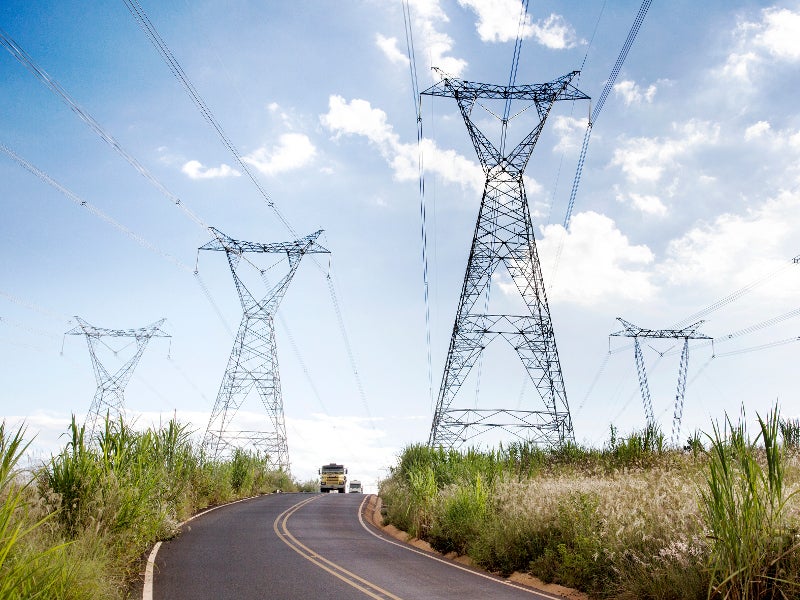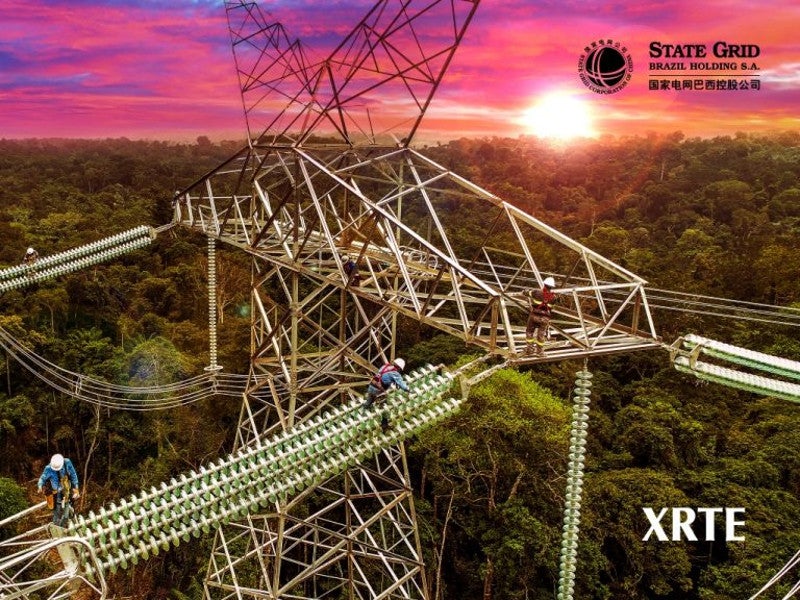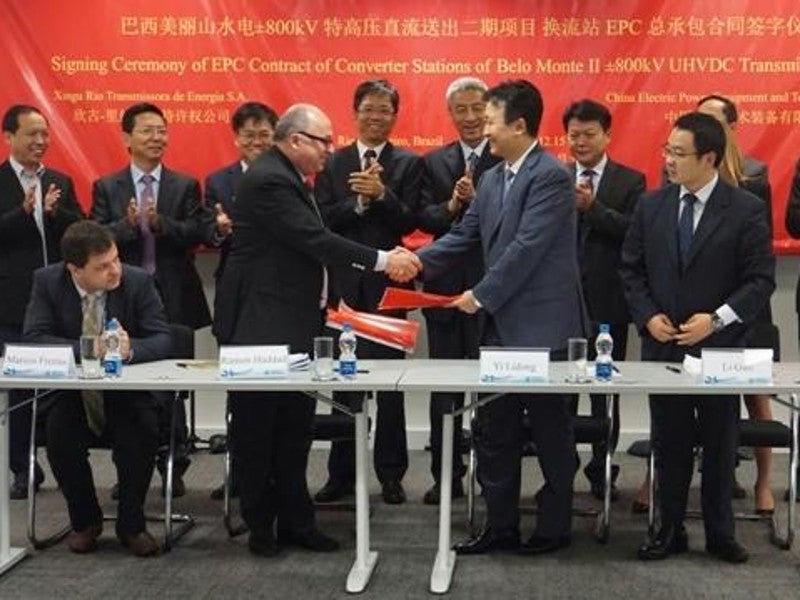The Belo Monte-Rio de Janeiro ultra-high-voltage direct current (UHVDC) transmission line in Brazil, also known as the Belo Monte UHVDC Bipole II line, is the world’s longest 800kV power transmission line.
The 2,539km-long transmission project is owned and operated by Xingu Rio Transmissora de Energia (XRTE), a subsidiary of Chinese state-owned State Grid Corporation of China (SGCC).
The Belo Monte-Rio de Janeiro line is the second UHVDC transmission line to be built for drawing power from the 11.2GW Belo Monte hydroelectric power plant in northern Brazil to the sub-stations in south-east Brazil.
Construction on the £1.85bn ($2.14bn) project was started in September 2017 and completed in March 2019.
XRTE received the license to operate the Belo Monte-Rio de Janeiro UHVDC link in June 2019.
Belo Monte-Rio de Janeiro HDVC line route and design details
Originating from the Xingu converter station near the Belo Monte Hydroelectric plant, in the state of Pará, the Belo Monte-Rio de Janeiro UHDVC transmission line runs for 2,539km to a terminal converter station at Paracambi, in the state of Rio de Janeiro.
Designed to transmit up to 4GW of electricity, the transmission line is capable of delivering electricity to approximately 22 million people in south-east Brazil.The transmission line passes through five Brazilian states namely Para, Tocantins, Goias, Minas and Rio de Janeiro and crosses a total of 81 cities along its route.
The Belo Monte-Rio de Janeiro HDVC transmission project involves two 4GW converter stations, an AC/DC converter station at Xingu and a DC/AC converter station at Paracambi, in Rio de Janeiro.
A total of 4,448 towers, each with a minimum height 105m, were erected for the 800kV UHDVC overhead transmission line.
Other components of the transmission project include two grounding electrodes, nine repeater stations, two synchronous compensators, 14 transformers of 800kV capacity and 14 transformers of 400kV capacity.
The project also involved the construction of a 30km-long, double-circuit 500kV AC transmission line from the Rio Terminal to the Nova Iguacu substation.
The capacity of Xingu AC/DC converter station is 800kV, 4GW while Terminal Rio AC/DC converter station is 800kV, 3.78GW.
Financing
The Brazilian Development Bank (BNDES) provided approximately £1bn ($1.3bn) for the Belo Monte-Rio de Janeiro UHVDC transmission project.
European contractors involved in the project
Tractabel Engie was engaged for civil, electrical and electromechanical design studies for the project.
ABB delivered 14 converter transformers of 400KV capacity each, for the Belo Monte-Rio de Janeiro transmission project, under a £61m ($75m) contract awarded in the last quarter of 2016.
Chinese contractors and suppliers involved in the project
PowerChina’s subsidiaries Shandong Electric Power Construction Corporation 1 (SEPCO1) and Fujian Electric Power Engineering Company, as well as the Xinjiang Electric Power Transmission and Transformation Company, were engaged for the engineering, procurement and construction (EPC) works for the Belo Monte-Rio de Janeiro transmission line project.
China Electronic Power Equipment and Technology Company (CET), a wholly-owned subsidiary of the State Grid Corporation of China (SGCC), carried out EPC works for the converter stations.
Chinese firms supplied the majority of electrical equipment including ultra-high voltage converter transformers, converter valves, and control and protection devices for the project. The total value of the electrical equipment imported from China for the project is estimated to be approximately £550mn ($720m).
Nari Group Corporation, a subsidiary of State Grid, supplied converter valves, control and protection system, equipment for measuring voltage and current, and power flow stability control system for the converter stations.
Sun.King Power Electronics Group supplied anode saturable reactors for converter valves.
Chengdu Electric Power Fittings Works, a subsidiary of PowerChina supplied pure aluminum wires, hardware and other materials for the project.
Chinese involvement in the power transmission infrastructure development in Brazil
The Belo Monte UHVDC Bipole II line has been built as part of China’s Belt and Road Initiative (BRI).
The first UHVDC line to be built by China’s State Grid Corporation in Brazil is the 2,092km-long Belo Monte UHVDC Bipole I, or the Belo Monte-Estreito transmission line that was commissioned in December 2017.
The 800kV transmission line that originates from Xingu in Para and terminates at Estreito in Minas Gerais is owned and operated by Belo Monte Transmissora de Energia (BMTE).
State Grid Brazil Holding (SGHB), a subsidiary of China’s State Grid Corporation, holds a 50 % stake in BMTE, while Fumas and Eletronorte, two subsidiaries of Brazil’s state-owned Eletrobras, own 24.5% stake each.
SGHB won the bid to construct and operate the Belo Monte UHVDC Bipole II line over a concession period of 30 years in July 2015.
State Grid Corporation of China invested more than £9.5bn ($12.4bn) in Brazil during 2010 and 2019 that represents approximately 60% of the company’s total investments outside of China in this period.





